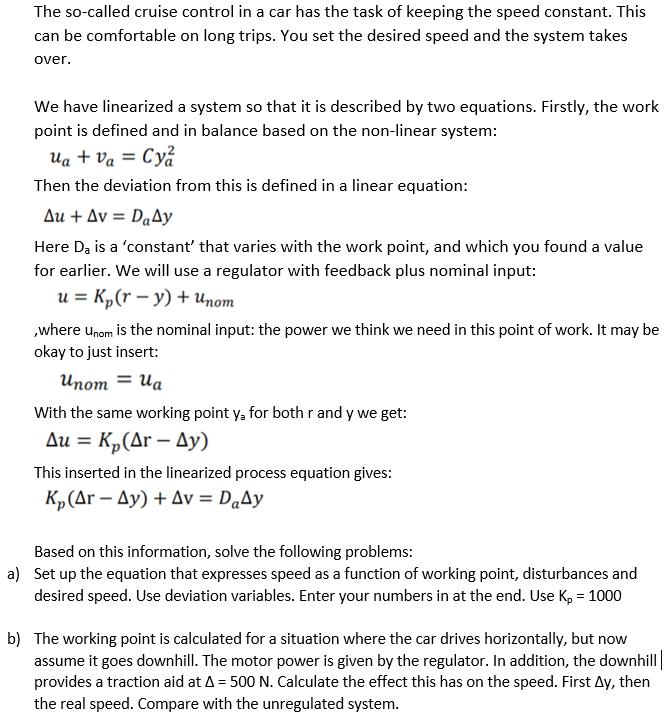Answered step by step
Verified Expert Solution
Question
1 Approved Answer
The so-called cruise control in a car has the task of keeping the speed constant. This can be comfortable on long trips. You set

The so-called cruise control in a car has the task of keeping the speed constant. This can be comfortable on long trips. You set the desired speed and the system takes over. We have linearized a system so that it is described by two equations. Firstly, the work point is defined and in balance based on the non-linear system: Ua + va = Cy Then the deviation from this is defined in a linear equation: Au + Av = DaAy Here Da is a 'constant' that varies with the work point, and which you found a value for earlier. We will use a regulator with feedback plus nominal input: u = Kp(r - y) + Unom where unom is the nominal input: the power we think we need in this point of work. It may be okay to just insert: Unom = ua With the same working point y, for both r and y we get: Au = K,(Ar Ay) This inserted in the linearized process equation gives: Kp(Ar - Ay) + Av = DaAy Based on this information, solve the following problems: a) Set up the equation that expresses speed as a function of working point, disturbances and desired speed. Use deviation variables. Enter your numbers in at the end. Use K, = 1000 b) The working point is calculated for a situation where the car drives horizontally, but now assume it goes downhill. The motor power is given by the regulator. In addition, the downhill| provides a traction aid at A = 500 N. Calculate the effect this has on the speed. First Ay, then the real speed. Compare with the unregulated system.
Step by Step Solution
★★★★★
3.40 Rating (153 Votes )
There are 3 Steps involved in it
Step: 1

Get Instant Access to Expert-Tailored Solutions
See step-by-step solutions with expert insights and AI powered tools for academic success
Step: 2

Step: 3

Ace Your Homework with AI
Get the answers you need in no time with our AI-driven, step-by-step assistance
Get Started


